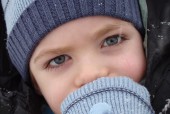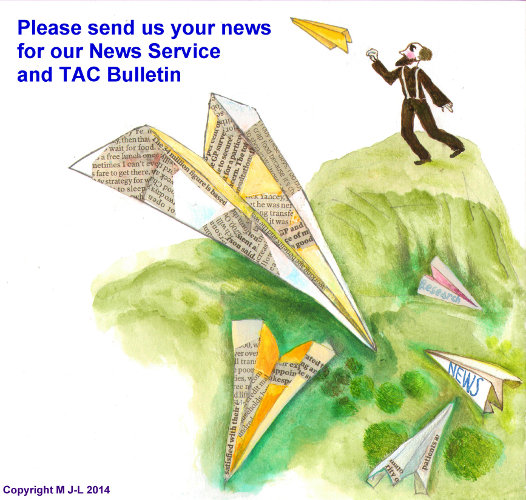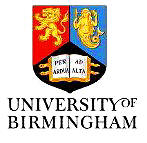 'Having a son the same age and with similar conditions made us so mad that it's clearly who you are that counts.' Please tell us your child's story.
'Having a son the same age and with similar conditions made us so mad that it's clearly who you are that counts.' Please tell us your child's story.
Peter Limbrick is collecting stories of 'the very special children of 2002' to send to the UK Prime Minister so he will understand what 'ordinary' families expereince.
Here is Nathan's story:
My youngest son Nathan was born in June 2002. By 8 months old I knew there was something wrong but the GP and health visitor told me I was worrying about nothing. During a routine appointment my son was admitted to hospital for 'tests'. 2 months after that week's admission and tests such as an MRI and EEG he was diagnosed with Cerebral Palsy. Although clearly distraught we were also thankful that it wasn't a life threatening condition.
We didn't have much to do with the NHS directly following this as a local centre for disabled children carried out his physio, hydrotherapy, OT and speech therapy.
However, at 3 years old Nathan had his first Grand Mal seizure, it was extremely frightening but we trusted the NHS to find the reason for it. Following further seizures his paediatrician suggested he had epilepsy so started him on medication and referred him to a neurologist. After waiting 4 months for the appointment the Neurologist said it wasn't seizures he was having but 'infant masturbation' and told us to stop the medication immediately. I was worried about her diagnosis as well as stopping medication overnight as he had to be weaned slowly onto the meds so thought I should slowly wean him off. Our paediatrician was furious and told us in no uncertain terms to keep him on the meds and she'd get a second opinion from Great Ormond Street hospital. 4 months later they informed us all his EEG's had always shown an underlying condition of epilepsy. We felt angry and let down by the NHS.
A couple of years later he started having episodes where it appeared he had stopped breathing and went blue. Every time we took him to A & E we would have to wait hours while the system treated children in priority order rather than arrival time. Our son, whilst obviously severely disabled, didn't appear ill just asleep. But when he eventually awoke he would go blue. Suddenly we would be taken seriously; the doctors would freak out and immediately admit him for 'tests'. After about the 6th admission, and still no diagnosis, we were told by the Consultant that we must be making it up as no one at the hospital had ever witnessed him going blue. Thankfully her SHO had read his file and pointed out previous doctors and nurses notes; unfortunately this was after my husband had stormed out of the hospital almost having a break down.
Another referral was made to Great Ormond Street to try to diagnose these episodes. It's clearly a world class hospital with regard to medical breakthroughs but unfortunately like the other 2 hospitals Nathan's been admitted to they're not geared up for severely disabled children. Although they were aware of his condition they didn't have a hoist available so I had to lift him into/out of bed and onto xray tables etc. After a week in there there's still no formal diagnosis just treat with oxygen.
It's always amazed me that the children's wards assume that a parent will stay at all times. Whilst adult wards have visiting times thankfully children's wards have open visiting but that's just as well since I've always had to care for him when he's admitted as the nurses don't do personal care such as change his continence pads or shower him (which has always been a joke as again they have no equipment so we take our own shower chair but have to lift him on and off and dry him lying on the floor). We've also had to constantly remind them when his medication is due and now take our own in and hold onto it rather than hand it in. We're also aware that if we didn't stay there he would starve as he can't feed himself and it takes 30 minutes to feed him and make him drink.
Unfortunately we've also experienced similar problems with social services and local education authority. We've had to fight hard to get him what he deserves. He was refused Disability Living Allowance so I had to take it to appeal. I had to go to our MP when our council and social services refused to fund the adaptations to our home (this was prior to the means testing on children and our MP said the best thing I could do would be to kick my husband out then it would only be means tested on me and the adaptations would be covered). The LEA decided my son should leave his special needs nursery (where he got physio etc on site) and go to nursery in a special needs school because it was a cheaper option, again I fought this and the night before the tribunal the LEA backed down.
I have to say we once used David Cameron's story when fighting with social services. He had just given his speech where he said he was grateful to the NHS for providing carers 3 nights a week. We were trying to get one night a month respite and told we should be grateful for that. Having a son the same age and with similar conditions made us so mad that it's clearly who you are that counts.
I'm extremely pleased to say Nathan is doing well at the moment. He's a massive joy to us and always makes everyone smile when they meet him.
It can be incredibly difficult caring for a child with special needs and unfortunately it's only the parents who shout the loudest and are prepared and able to fight that receive anything near the help and support they deserve.
We don't all have David Cameron's high profile and for most we're just 'ordinary' families.


 The Communication Resource Centre provides information, advice, resources and services relating to the many different aspects of communication disabilities.
The Communication Resource Centre provides information, advice, resources and services relating to the many different aspects of communication disabilities.  'Having a son the same age and with similar conditions made us so mad that it's clearly who you are that counts.'
'Having a son the same age and with similar conditions made us so mad that it's clearly who you are that counts.'  The purpose of this briefing is to present some ideas for best practice in the effective delivery of learning disability services to users from BME communities.
The purpose of this briefing is to present some ideas for best practice in the effective delivery of learning disability services to users from BME communities.